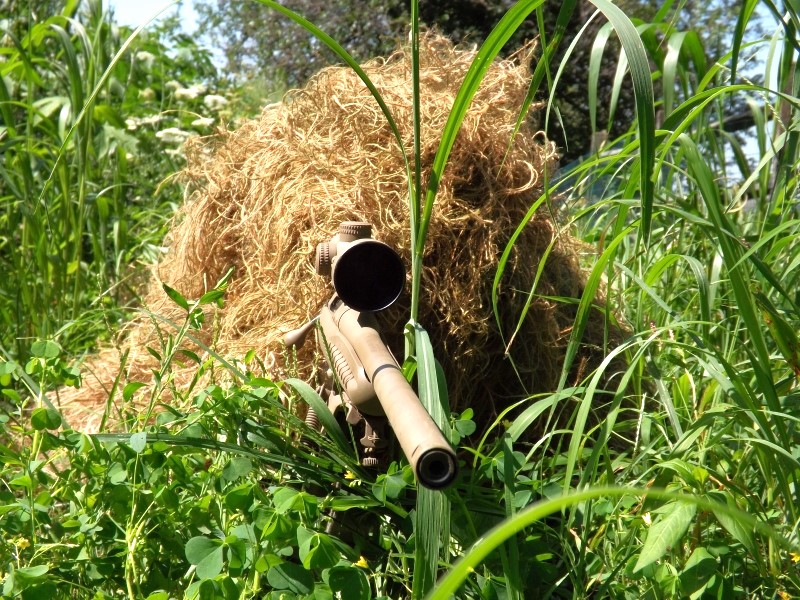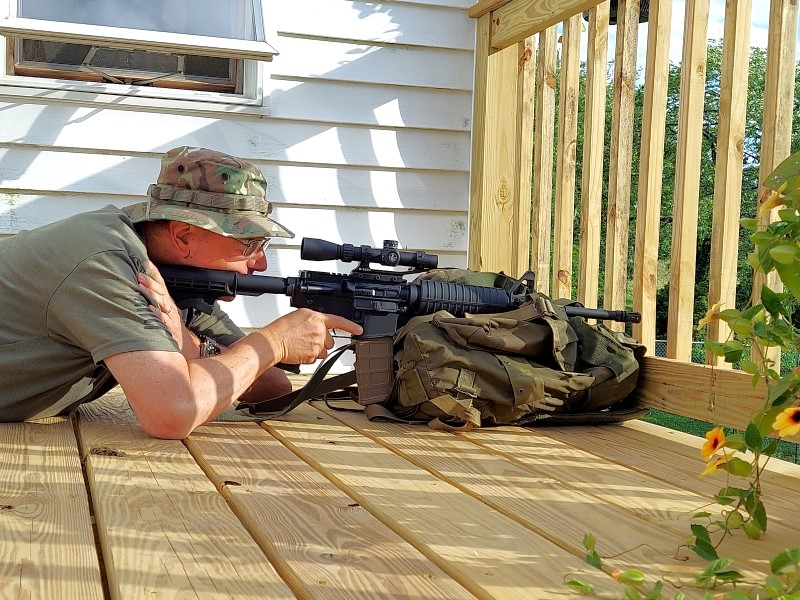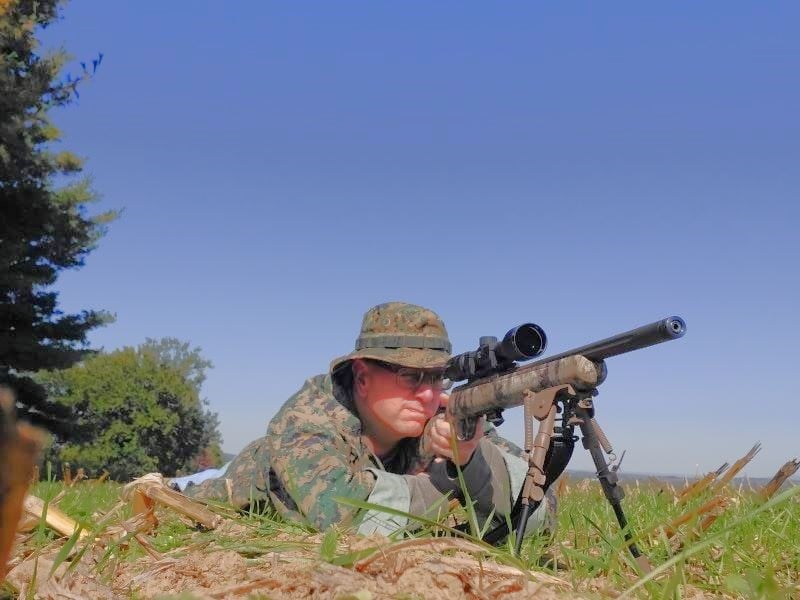My professional introduction to bipods occurred back around 1994. It was the best of times, and it was the worst of times. Mostly, it was the worst…
‘Twas my first sniper school, and I was giddy with excitement (and a tad nervous, as well). My class was about to learn some new-found skills with which to fight evil and make the world safe for democracy. I had a few gun cases and several packs containing a myriad of sniping gear piled into my pickup truck. I guess you could say that I had a few “truck guns”, even though the term wouldn’t become popular for a few more decades.
The rifles were a Colt HBAR AR-15A2 and a Remington 700 PSS in .308. The Remington 700 was the one that was wearing the bipod.
I’d certainly seen bipods before and even used them a few times, but I was about to get a crash course in various shooting positions. That included finding out how useful a bipod could be.
So, can a bipod really make a difference in your ability to shoot accurately and consistently? Join us as we see whether or not they are actually useful, or just a gimmick.
Sniper, No Sniping!
For the duration of the sniper school, we cycled through various shooting positions. Often, we set up hides inside buildings. But wherever we found ourselves, the point was driven home that we had to be very adaptable to our environment. Very rarely did we get a convenient shooting position; most often, we had to figure out how to set up and be ready to engage targets. The positions were usually awkward and inconvenient, not to mention uncomfortable. We used whatever materials were on hand to set up for the shot.
Many times, if we had nothing to rest the rifle on to attain stability, the bipod would prove to be invaluable.
Whether in a building or on the ground, the angle that the rifle was at was uneven. Having a bipod with legs that were adjustable helped to level the rifle out. The Harris bipods that we used were able to adjust each leg so we could make one or the other shorter so we had a steady sight picture. It took little work to make one of the legs shorter to keep the rifle more level, but it was a great option.
Rock Steady
It wasn’t long before we figured out that making the qualification shots was greatly helped by using the bipod (in fact, those shots would have been impossible without a bipod). We’d set the rifle up, level the bipod off, then use a small sandbag underneath the rear of the stock. Squeezing the sandbag would change the elevation of the muzzle by lowering it. Releasing pressure on the sandbag would raise the crosshairs on the target.
Between the bipod and the sandbag, the crosshairs would normally be rock steady on the target. Except…
They’d make us do Stress Shooting exercises.
They’d have us run about 500 yards in full gear. We’d end up on the firing line, jogging in place until a whistle blew. At that point, we had 30 seconds to hit the deck, load the rifle, and fire a shot into the target’s medulla oblongata (the brain stem). If you ever do this, you’ll realize that the crosshairs jump each time your heart pounds. Which, given the fact that we’d just run a distance, was pretty frequent. Let me tell you, we were glad for the extra assistance that the bipod provided for us to maintain a steady sight picture.

Understand that the medulla oblongata is approximately the size of an adult’s thumb. Imagine trying to hit that at 100 yards, after a brisk run, as your heart is pounding out of your chest. It simulates either physical activity or the psychological stress of taking a shot that will end a human life.
We could not afford to miss. An error of just a half inch could mean a hostage would be killed, and that simply was not acceptable. The shot had to be made perfectly. And that bipod was a significant part of the equation that helped make it happen.
Variety
There are oodles of bipods available, made by a plethora of manufacturers. I was trained on the Harris bipod and am very familiar with it, so that’s what I’m most comfortable with. That doesn’t mean that you have to limit yourself to one brand, though. A few other notable brands are Magpul, Truglo, B&T Industries, and Caldwell, among others. For the most part, you can’t go wrong – so long as you steer clear of the cheap, Chinese-made off-brand bipods on Amazon.

Positions
We usually had to make the stress shots from the prone position. For that, the bipod worked perfectly. As mentioned, if there was time, we’d also try to slip that little sandbag underneath the rifle’s buttstock.
Other times, we might find ourselves in the woods, so a log or tree branch might be used to help steady the rifle.
In a room, we sometimes used a table (bipods are often great on tables) or the back of a chair. Basically, anything that we could use to get that rifle steady and still.

Uses
Snipers aren’t the only ones to use bipods; anyone who shoots rifles can usually find a use for a bipod. Let’s take a look at a few instances.
Hunters
In the hunting field, you never know when game is going to present itself (as with sniping, count on it to be at the most inopportune time). Being flexible in shooting positions is a major asset, and the bipod furthers your flexibility.

A hunter might find a fallen tree and need just a little more height to make the shot. The angle might be weird, so maybe the shooter unfolds one of the bipod legs and uses the bipod in an unorthodox manner to accomplish the shot. The same flexibility could be applied to sniping. The point is that you do whatever is needed to make the shot.
Target Shooters
I’ve used a bipod on many occasions to sight in a rifle on the range. The ability to have the rifle evenly lined up and held steady is great for zeroing a rifle scope. Once it’s zeroed, the bipod can help you to shoot tight groups. It’s nice when those crosshairs can be held on the bullseye and they don’t move.

Competition Shooters
Some competitions allow participants to use bipods. The steadiness offered can be a make or break in a competition. Normally, the longer the range, the more valuable a bipod becomes. Or, barring range, the smaller the target, the more help the bipod gives us.
In Summary
Bipods are a great tool to have on your rifle. They can provide stability and elevate our rifle a bit when there’s nothing else around to do so. They add to our versatility as a shooter because they permit a shot to be made where one might have otherwise been nearly impossible. Sure, we could try for an offhand shot, but let’s face it – the stability of offhand shots is often just not there, which can result in a miss.
Is it the end of the world if we miss? That all depends. If we miss in a competition, there might be prize money at stake, along with our reputation. A miss isn’t the end of the world, but if it’s your vocation, your employment could be detrimentally affected.
If a miss happens in the hunting field, there’s surely a disappointment. And, an empty freezer could result because some folks rely heavily on hunting to fill their freezer.
Bipods aren’t our salvation for every situation. Sometimes another rest will work better. But it sure is nice to have one available for the times when it can save the day.


